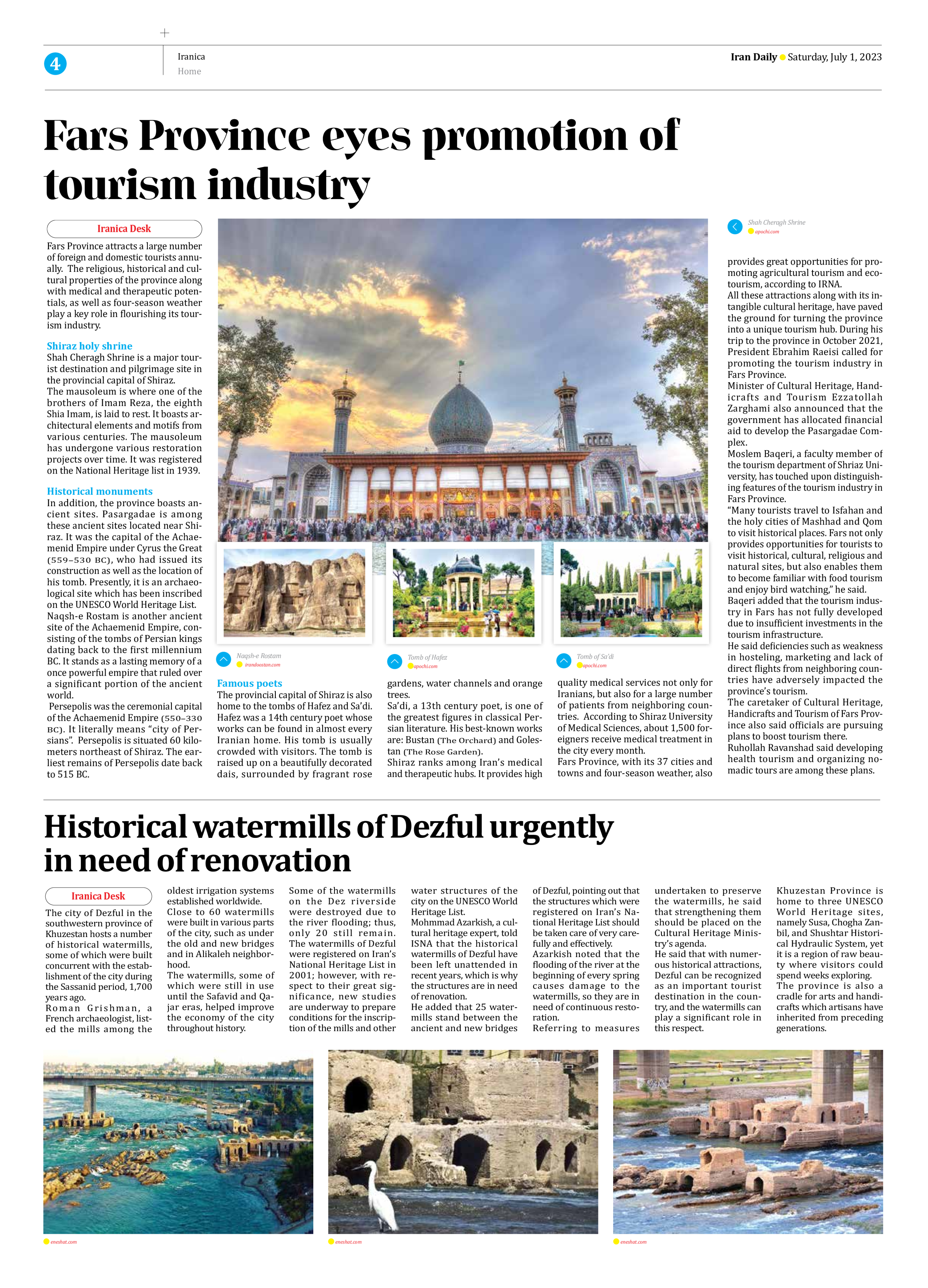
Historical watermills of Dezful urgently in need of renovation
The city of Dezful in the southwestern province of Khuzestan hosts a number of historical watermills, some of which were built concurrent with the establishment of the city during the Sassanid period, 1,700 years ago.
Roman Grishman, a French archaeologist, listed the mills among the oldest irrigation systems established worldwide.
Close to 60 watermills were built in various parts of the city, such as under the old and new bridges and in Alikaleh neighborhood.
The watermills, some of which were still in use until the Safavid and Qajar eras, helped improve the economy of the city throughout history.
Some of the watermills on the Dez riverside were destroyed due to the river flooding; thus, only 20 still remain.
The watermills of Dezful were registered on Iran’s National Heritage List in 2001; however, with respect to their great significance, new studies are underway to prepare conditions for the inscription of the mills and other water structures of the city on the UNESCO World Heritage List.
Mohmmad Azarkish, a cultural heritage expert, told ISNA that the historical watermills of Dezful have been left unattended in recent years, which is why the structures are in need of renovation.
He added that 25 watermills stand between the ancient and new bridges of Dezful, pointing out that the structures which were registered on Iran’s National Heritage List should be taken care of very carefully and effectively.
Azarkish noted that the flooding of the river at the beginning of every spring causes damage to the watermills, so they are in need of continuous restoration.
Referring to measures undertaken to preserve the watermills, he said that strengthening them should be placed on the Cultural Heritage Ministry’s agenda.
He said that with numerous historical attractions, Dezful can be recognized as an important tourist destination in the country, and the watermills can play a significant role in this respect.
Khuzestan Province is home to three UNESCO World Heritage sites, namely Susa, Chogha Zanbil, and Shushtar Historical Hydraulic System, yet it is a region of raw beauty where visitors could spend weeks exploring.
The province is also a cradle for arts and handicrafts which artisans have inherited from preceding generations.







